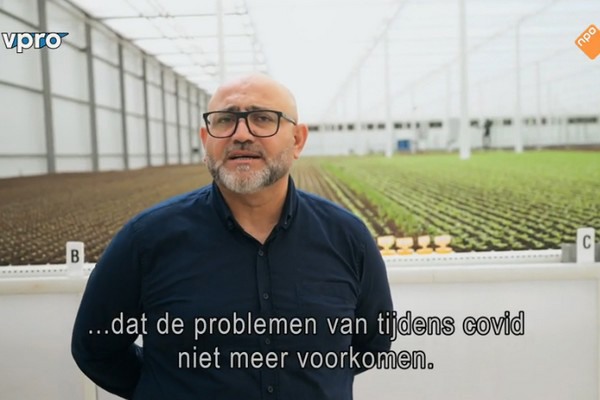Mega greenhouses, dairy companies, and poultry factories stand amidst the deserts of the United Arab Emirates and Saudi Arabia, where water is scarce. With water-saving solutions such as closed greenhouse systems and innovative irrigation, local food production is increasingly feasible. These cutting-edge techniques, professionals, and knowledge are imported from abroad. Much of this expertise comes from the Netherlands, as observed by Kadir van Lohuizen in episode four of his TV series, Food for Thought.
Kadir went to see cows, but also got a peek into the operations at Bustanica, which manager Aaron Moore describes as 'the world's largest vertical farm'. Spanning 3 hectares in multi-layer cultivation, they grow lettuce, spinach, and arugula, with Aaron emphasizing the efficient use of water.
Yazan Abu Jaish from Armela Farms highlights the advantage of an abundance of natural light. He sees no need for vertical farming and explains how they strive to create an optimal growing climate for lettuce in a modern greenhouse of Dutch design.

Yazan Abu Jaish of Armela Farms
Dutch aid desert growers
The coronavirus crisis jolted the desert nations, sharply reminding them of their dependency on imports. Since then, efforts have been made to reduce their import dependency, currently at about 80 to 90%. Armela Farms produces 4.5 to 5 tons of lettuce per day, year-round. The water is sourced from underground wells. This, along with the hub function of the greenhouse, is why they cultivate 150 kilometers outside Abu Dhabi. "Compared to low-tech cultivation, our water use is 94% lower," the representative from Armela Farms emphasizes.
Kadir poses critical questions about desert cultivation, questioning its sensibility. Marc Middeldorp from Van der Hoeven Horticultural Projects provides the TV host with an explanation of the technology behind the cultivation. With reverse osmosis, salty water is turned into fresh water, and with active ventilation, 'cultivating in extremely hot climates is no longer such a big challenge'. Modern techniques have expanded the horizons for greenhouse horticulture, making Marc no longer surprised by the construction of a greenhouse in the desert.
Labor and water in the African continent
He also points to the emergence of 'spoiled consumers' who, just like in the Netherlands, expect to have fresh vegetables available year-round. The 'hands' come from outside the region, including India, Pakistan, and Bangladesh.
Kadir also takes a ride with Mohammed Saleh al Mallouhi of Al Mallouhi Agriculture, examining the Dutch greenhouse technologies. Ahmed Eltigani Elmansouri of Al Rawabi predicts that water will remain a challenge in the region unless AI offers a solution, if possible.
He views the future of food cultivation in the desert optimistically, though he acknowledges that reducing import dependency will take time. What helps is the investment in cultivation in Africa, from which the desert countries will also benefit. According to the representative from Al Rawabi, this import from Africa is 'different' from the current import dependency. However, it is crucial to handle Africa's potential carefully, avoiding soil and water pollution. Perhaps building greenhouses there is the solution?
